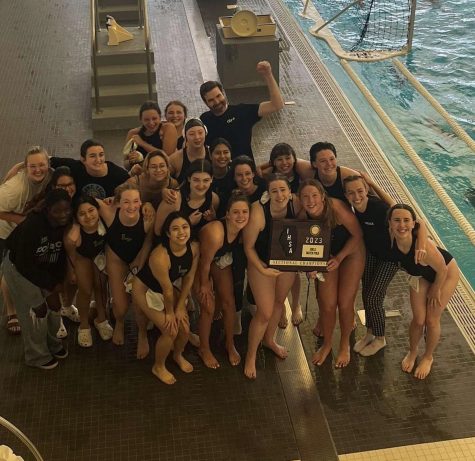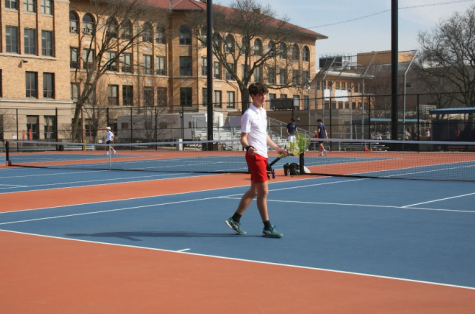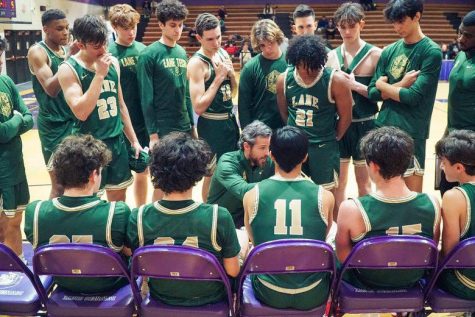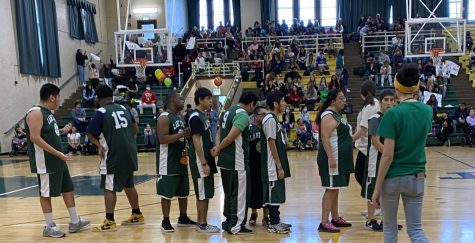Are sports at Lane getting too competitive?
Girls Soccer players from Lane (black) and Jones (white) fight for control of the ball.
May 10, 2019
Leticia Ocampo has played soccer since second grade. After playing for her elementary school and around her neighborhood, she played for the frosh/soph team at Lane for two years. This year, she entered tryouts with some faith, but started panicking when she saw everyone else.
“I had a little bit of confidence because I played last year and I went to conditioning, but I still didn’t make the team,” Ocampo, Div. 055, said.
This is the case for many athletes at Lane; students who have played a sport for almost their entire life sometimes do not make the cut.
Ms. Vale, the girls head soccer coach, said that cutting players is a very difficult task.
“I know a lot of them, either from class, other years of playing, or just from the hallway, and so the process becomes even more difficult,” Vale said. “When it comes down to it, I have to put that part aside in order to evaluate the players on their soccer skills.”
Vale estimates that approximately 120 girls tried out for soccer this year and roughly 60 made at least one of the three teams. Other sports cut a similar amount of people.
Mr. Telles, assistant girls volleyball coach and head boys baseball coach, estimates that around 70 out of over 100 girls who tried out for volleyball this year did not make one of the three teams.
Telles also approximates that about 25-26 of the 40-45 boys who tried out for JV and Varsity boys baseball teams were cut and reported that sports like girls volleyball and boys baseball do not allow juniors to be on JV.
This makes the process even more competitive, according to Grace Kendrick, Div. 077,who tried out for volleyball this year.
“Freshman and sophomore year the tryout process was pretty easy,” Kendrick said. “It was stressful, but I ended up making the team so it was fine. Then, junior year, when I had to be on varsity, it was really tough.”
Kendrick also said that playing on a travel team helped her make the team at Lane. Travel teams offer athletes a chance to play a sport during the off-season and compete in tournaments outside of school.
“If you don’t play for a specific club, then you have a worse chance making the school team,” Kendrick said. “That’s a big portion of making the team or not.”
Telles said that travel teams play a role in the tryout process, but only because it gives athletes more practice.
“Playing for a travel team helps, but it only helps because you know that they’ve been playing,” Telles said. “Back in the day, like 10 years ago, if you were on a travel team, that was like an elite thing. But now, there’s hundreds of travel teams for baseball and volleyball. And so just because you’re on a travel team doesn’t mean you’re the best.”
According to Telles, travel teams are less distinctive and selective than they used to be. Additionally, some of them can be expensive.
Teams like the soccer club Chicago Fire charge over $2,000 per season, making travel teams difficult to afford for some students, according to Ocampo.
“My older brother played for club, so my parents couldn’t afford two kids playing for club at the same time,” Ocampo said.
Although some students at Lane get cut or do not have the chance to play for a travel team, there are still opportunities to play sports outside of school teams, according to Kendrick. Other athletes join neighborhood leagues or just play for fun with families of friends.
“After tryouts, I wasn’t super devastated because I feel like volleyball had just taken a toll on me,” said Kendrick. “I didn’t join another club team, but sometimes I go to open gyms and I plan on playing beach this summer.”









